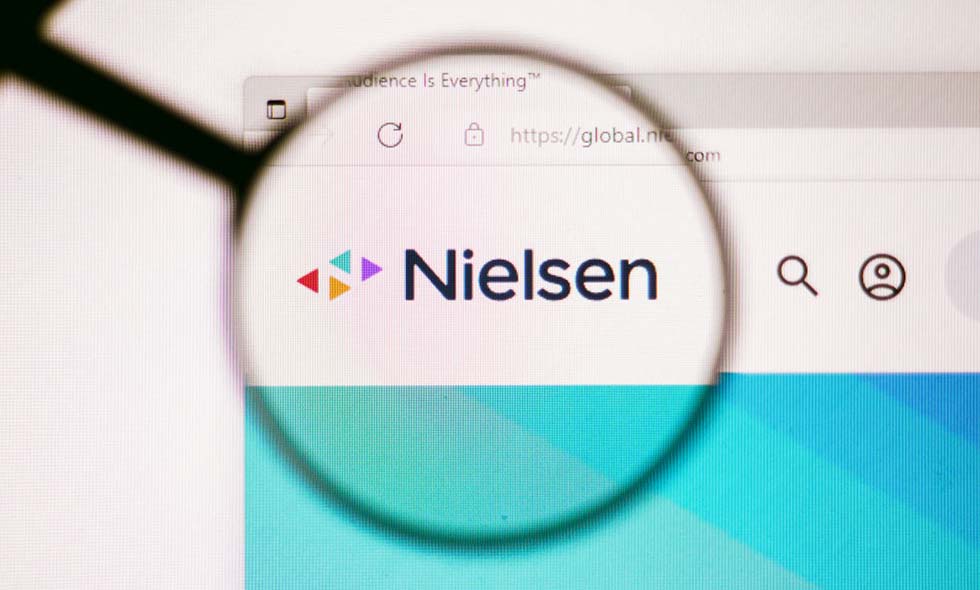Nielsen Plans To Make ‘Big Data’ Available as Currency in September
New measurement system increases homes using television by about 4%

Nielsen said it plans to make its combination of panel data plus big-data measurement systems available to use as its preferred currency effective in September, when upfront deals cut this spring take effect.
Nielsen is incorporating big data from Dish Network, DirecTV, Roku, Vizio and Comcast into its new measurement systems. Nielsen is also taking to streamers to incorporate their data into its service.
The big data — from 45 million households and 75 million devices — gets combined with the 40,000 households participating in Nielsen’s panel to create the new ratings. Nielsen uses the panel as a “truth set” that enables it to create person-level data and iron out errors, biases and other imperfections in the big data sets it works with.
At a time when viewing is more fragmented than ever, using big data makes Nielsen’s audience estimates more stable and sensitive, with fewer incidents of programs or demographic groups showing up with no viewers in the sample — the so-called zero cells, Deirdre Thomas, Nielsen’s chief product officer, said on a conference call with reporters.
“You really need a big data set to understand because there are all the different types of media platforms and devices that we all roam around on,” Thomas said. “But bit data alone cannot get it done. You need a truth set.”
Nielsen also said that using big data increases viewing levels by 4% to 5%, added Pete Doe, Nielsen’s chief research officer. Viewing levels increase more for younger viewers than older ones.
Ratings for most shows are up slightly or flat, Doe said.
The smarter way to stay on top of broadcasting and cable industry. Sign up below
Nielsen has dominated the TV ratings business for decades, but throughout that time had been subject to criticism when its numbers haven’t measured up. During the pandemic, Nielsen lost the Media Rating Council’s accreditation for its national and local measurement processes.
Nielsen regained its national accreditation last year, but only for its panel-based data. Its plan to add big data has yet to be accredited by the MRC.
The measurement world has also become more competitive with companies looking to use big data to improve audience estimates.
Last month, Comscore received household-level accreditation from the MRC for its national and local measurement system.
Nielsen is also facing competition from iSpot.tv and VideoAmp.
Comscore, iSpot.TV and Videoamp all received provisional certification from the Joint Industry Council on Measurement for their use of big data to produce audience estimates. (Nielsen declined to participate in the JIC process.)
Getting MRC accreditation has historically been a big deal for media buyers and advertisers, but Nielsen appears ready to go forward with its big data even before the MRC has finished its review.
But this upfront, big-data currencies will be used for transactions.
“Big data from any one of four measurement companies (Nielsen, VideoAmp, iSpot, & Comscore) is a given as an upfront currency option,” said Sean Cunningham, CEO of the Video Advertising Bureau, which has been monitoring the measurement and currency situation closely on behalf of its membership of programmers and distributors who sell advertising.
“Three of the above (VideoAmp, iSpot & Comscore) have been through a rigorous JIC data testing process to good result, and Nielsen national data is at the tail end of an MRC audit process, there are also some who may want to trade on Nielsen panel; there are definitely choices,” Cunningham said.
Nielsen’s big data will enable it to help plan and measure advanced audiences. Nielsen can link data that brands have about their customers to identify target consumers and create cross-platform measurement as well, Thomas said.
The new system will also better enable Nielsen to measure addressable advertising.
Thomas noted that as part of the process of launching big data as part of its currency, Nielsen has been providing clients with impact data since the end of last year to gauge how the new measurement performs. Nielsen will continue to use C3 and C7 as metrics and continue to provide panel-only data to clients who prefer to use it.
Jon has been business editor of Broadcasting+Cable since 2010. He focuses on revenue-generating activities, including advertising and distribution, as well as executive intrigue and merger and acquisition activity. Just about any story is fair game, if a dollar sign can make its way into the article. Before B+C, Jon covered the industry for TVWeek, Cable World, Electronic Media, Advertising Age and The New York Post. A native New Yorker, Jon is hiding in plain sight in the suburbs of Chicago.

